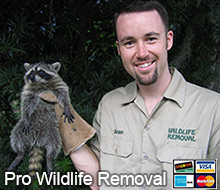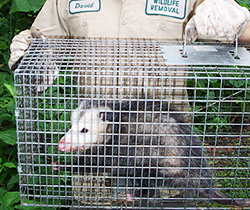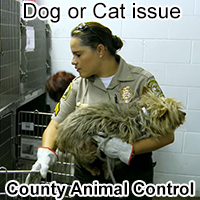- conway@aaanimalcontrol.com
Call 24/7 for a free quote:
603-869-7805
Conway Wildlife Control / New Hampshire Animal Removal
Animal Damage Control - Animal Pest Control in Conway, NH. Call us: 603-869-7805

- Noises in Your Attic?
- Unwanted Wildlife?
- Bird or Bat Problem?
- Rodent Infestation?
- We Can Solve It!
Please, no calls about DOG or CAT problems. Call animal services: 800-552-8960.
 SPECIALIZING IN BAT REMOVAL & FLYING SQUIRREL REMOVAL FROM ATTICS
SPECIALIZING IN BAT REMOVAL & FLYING SQUIRREL REMOVAL FROM ATTICS
Animal Damage Control is a family owned and operated business that specializes in all forms of wildlife removal. we are experts in the removal of flying squirrels and bats and offer unbeatable guarantees. When we take care of your wildlife removal problem we are also taking care of you. Owner/operator David is a Nationally Certified Wildlife Professional. We offer the best guarantees in the industry. More than 23 Years Experience.
- Licensed Trapping
- Exclusion Barriers
- Animal Removal
- Animal Waste Cleanup
- Damage repairs
- Fully Insured to $1,000,000
 Animal Damage Control provides professional wildlife control for both residential & commercial customers in the
city of Conway in New Hampshire. We offer custom animal control solutions for almost any type of wildlife problem, whether
it be the noises of squirrels running through the attic, a colony of bats living in a building, animals digging in your yard, or
the destructive behavior of a raccoon or other critter, we have the experience and the tools to quickly and professionally
solve your problem. For a consultation and price quote, give us a call at 603-869-7805
Animal Damage Control provides professional wildlife control for both residential & commercial customers in the
city of Conway in New Hampshire. We offer custom animal control solutions for almost any type of wildlife problem, whether
it be the noises of squirrels running through the attic, a colony of bats living in a building, animals digging in your yard, or
the destructive behavior of a raccoon or other critter, we have the experience and the tools to quickly and professionally
solve your problem. For a consultation and price quote, give us a call at 603-869-7805
Click here to check our prices updated for year 2024. There are many Conway pest control companies for animals out there, but not all of them are licensed and insured professionals. Make sure that you hire a competent expert for your Conway exterminator of wildlife. At Animal Damage Control, we will be courteous and friendly and take the time to answer your questions. Give our Conway trappers at Animal Damage Control a call, and we will listen to your problem, and make an appointment to perform an inspection. Feel free to email us at conway@aaanimalcontrol.com
 Resources for free wildlife removal in Conway
Resources for free wildlife removal in Conway
If you can't afford our pro wildlife work, you can try these agencies for free wildlife removal:
Carroll County Animal Services: 800-552-8960
New Hampshire Wildlife Commission: 603-271-3421
Conway Police Department: 843-248-1790
These agencies will only help with certain types of wildlife problems, and they are not always consistent. If you want a high quality of
help done right, call our company.
 New Hampshire is full of wildlife, including snakes, squirrels, raccoons, skunks, opossums, and more. Wildlife removal is a complex field. I
recommend professional Conway wildlife control services if you want to solve a critter problem legally and correctly. For example, we specialize in animals in the attic, which have broken into the house
and almost always have a nest of baby animals. It is necessary to perform correct
preventative repairs to keep pest animals a out of your house for good. We perform full building inspection, do the
the repairs and we also offer attic decontamination if necessary. Rats and mice love to live in attics, and can chew wires or leave droppings. Some Conway animals
frequently enter homes, and correct removal is not a simple task.
New Hampshire is full of wildlife, including snakes, squirrels, raccoons, skunks, opossums, and more. Wildlife removal is a complex field. I
recommend professional Conway wildlife control services if you want to solve a critter problem legally and correctly. For example, we specialize in animals in the attic, which have broken into the house
and almost always have a nest of baby animals. It is necessary to perform correct
preventative repairs to keep pest animals a out of your house for good. We perform full building inspection, do the
the repairs and we also offer attic decontamination if necessary. Rats and mice love to live in attics, and can chew wires or leave droppings. Some Conway animals
frequently enter homes, and correct removal is not a simple task.
 DOG or CAT: If you need assistance with a domestic animal, such as a dog or a cat, you need to call your local
Carroll County Animal Control
for assistance. They can help you out with issues such as stray dogs, stray cats, vaccinations, licenses,
pet adoption, lost pets, and more. If you have a wildlife problem, you can try calling the Carroll County animal control, and see what they have to
say, but they will certainly not help you with a complex wildlife problem such as critters in your attic. They are a free government agency that
helps with dog and cat issues only.
DOG or CAT: If you need assistance with a domestic animal, such as a dog or a cat, you need to call your local
Carroll County Animal Control
for assistance. They can help you out with issues such as stray dogs, stray cats, vaccinations, licenses,
pet adoption, lost pets, and more. If you have a wildlife problem, you can try calling the Carroll County animal control, and see what they have to
say, but they will certainly not help you with a complex wildlife problem such as critters in your attic. They are a free government agency that
helps with dog and cat issues only.
Carroll County Animal Services: 800-552-8960
Conway Wildlife Tip:
What Is A Common Size Of A Groundhog Burrow - If you have seen a burrow in the wall whether the burrow is inside a garden or outside there is a chance that it is a groundhog burrow. Groundhogs do not need large burrows to get through and they can even make their own burrow using their claws. The claws need to be used because they never stop growing and unless the claws are used in this manner they will keep growing to the point where the groundhog is no longer able to eat. That is the same reason why groundhogs will sometimes chew on wires. This prevents future problems while eating for the groundhog.
But how big is the size of a groundhog burrow. If you see the groundhog it does not look as small as other groundhogs, but it does not need much more space either. A groundhog can fit in a burrow small enough that you would think that even a rabbit would have trouble getting through. Depending on the type of groundhog it may not need anything more than a nickel sized burrow to make its way inside. The more common groundhog (the gray groundhog) needs a bit more room, but not by much. Check for burrows on the wall outside and you will probably find a very small one your groundhog came in through.
Conway, NH Animal Control News Clip:
Widely known as the American jackal, Coyotes are highly believed to have evolved from North America and are of today well distributed in North American parts although a few subspecies of coyote are also present in South American parts. Coyotes are categorized in the dogs' family.
Coyote is typically a grayish animal with a buff on its throat and body. Its fore head and muzzle are reddish brown with a black tail dark crosses on its shoulders. Coyotes are of medium length of about 76-86 cm and a shoulder height of 58-66 cm. They weigh 6.8 -21 kg and may run at an average speed of 69 km/h and have the ability of jumping up to over 4meteres.
A coyote pack has an average of six members comprising of both adults and young ones. They mostly do their hunting in pairs and are highly active during the night. Unlike their cousins the wolves who reach maturity in their second year of birth, coyote are fully mature in their first year and are by then very aggressive animals. Unlike the wolves, they are able to coexist well with humans and can live up to 18 years while in captivity although this is highly reduced only to only 8 years while in the wild. Coyotes mostly mate in late January and March and have awn average gestation of 62 days giving birth to a litter of about 19 pups. The reason for this large litter sizes is primarily due to their high morality rate of about 60percent.The blind pups weigh about 250 grams and wean for about 35 days after which they leave the den. By 10 months, they are fully grown and can be sexually active by 12 months.
When communicating, Coyotes make high pitched howls mostly at dusk. This is most common during the mating season. Their diet is primarily mammalian and coyotes are highly fond of small mammals for their meal but they occasionally feed on insects, birds and snakes among others. They like eating fresh meat for their meals but may sometimes feed on carrion. During winter, they also feed on vegetables and urban coyotes feed on dogs and other small pets as well. While in parks, they can kill a deer for their meal and an unlucky human may not be spared by coyotes. Their large variety of meals means that they can adapt and survive in different areas of the world. Coyotes have an acute sense of smell and hey make their hunting through stalking in grass and making a pounce on the prey .They rarely give up while hunting.
Coyotes have of recent fallen prey of wolfs and cougars. They always engage in physical confrontations and will each kill the others pups. They have been found to have a peaceful coexistence with American badgers for mutual benefit and also share their territories with bobcats once in a while.
In North America especially in California coyotes attack on humans have increased although they cause no very serious injuries. In urban areas, increased hospitality of humans on coyotes has been reciprocated with great aggressiveness by the coyotes that chase cyclists and harass small children. They highly launch surprise attacks on sheep and goats and suffocate them to death. Unlike dogs, coyotes make partial consumption on their catches and leave highly distinctive oval shaped tracks.
In an effort to protect the livestock and promote the safety of humans, the USA government has been on a campaign to eliminate Coyotes. Of late, more than 90000 coyotes have been shot and killed making man the greatest threat of coyotes as of present.
We are Conway wildlife management experts, and are familiar with all the pest animals, including all species of New Hampshire snakes and
bats. We at Animal Damage Control are the best among Conway nuisance wildlife companies and can solve all animal damage issues. Our wildlife operators are skilled at bird control and
bat removal, and would be happy to serve your Conway bat control or pigeon and bird control needs with a professional solution. Opossums, skunks, moles, and other animals
that can damage your lawn - we are the exterminators who can capture and remove them. Our specialty is removal of animals in homes such as raccoons in the attic or squirrels in the attic.
Our professional pest management of wildlife and animals can solve all of your Conway
critter capture and control needs. Give us a call at 603-869-7805 for a price quote and more information.
If you have any questions about a wildlife problem in Conway, or wildlife removal in Carroll County, please give Animal Damage Control a call at 603-869-7805, and we will listen to your problem, give you a price quote, and
schedule an appointment, usually same day or next day, to solve the problem.


















